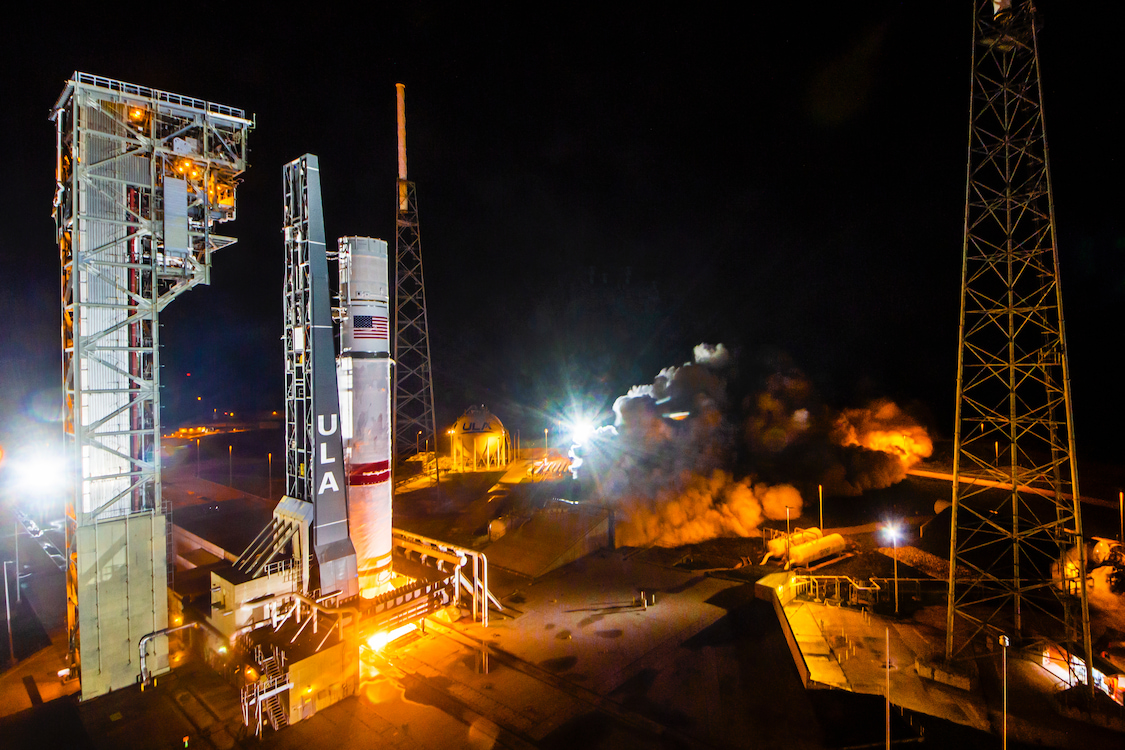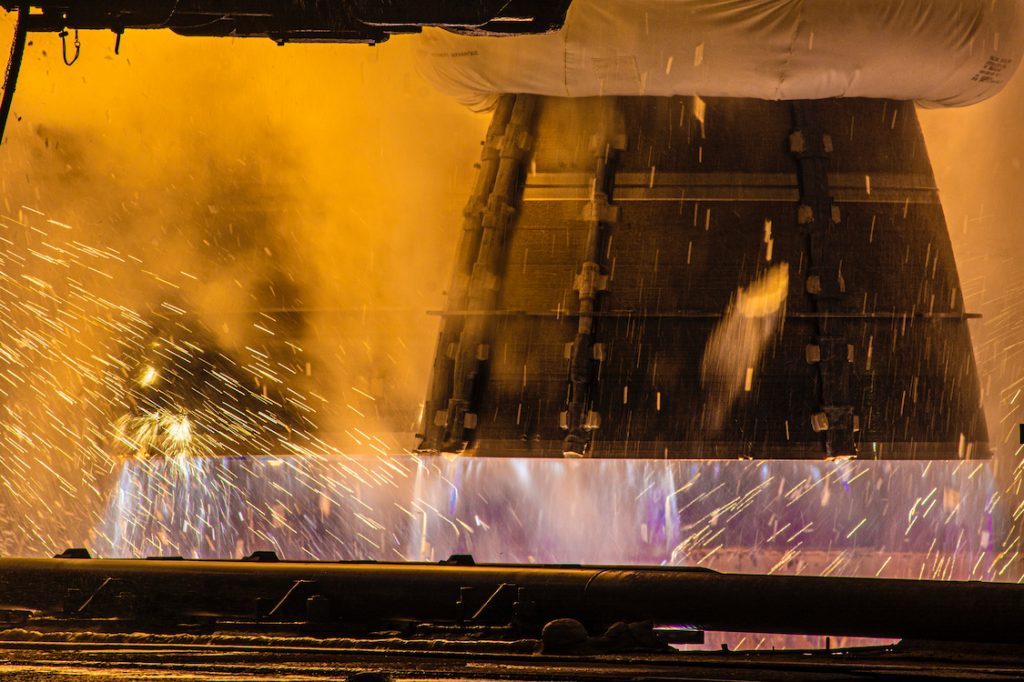
Wednesday evening, ULA completed a short start-up of the two Blue Origin BE-4 engines on the bottom of its Vulcan rocket at SLC-41. This was part of a final test before getting the rocket ready to fly its first mission later this year.
Major milestone test for ULA
ULA is on a path to certify its Vulcan rocket to fly national security payloads for the US Space Force, its biggest customer. This requires two launches, first with the Cert-1 mission carrying Astrobotic’s Peregrine lunar lander, an Amazon Kuiper satellite, and a memorial mission for Celestis. This will be followed by the first launch of Sierra Space’s Dream Chaser spaceplane. At least, that’s the plan.
This Flight Readiness Firing is the last step before launching Vulcan. The primary payload, the Peregrine lander, is ready to fly. The latest update we got from them was their lander was finished and ready to make the trip to Florida. This was about a month ago. With a successful FRF, I’m sure payload integration is not too far away now.
What is a Flight Readiness Firing?
While ULA calls it something different, an FRF is just like the static fires we’ve seen from SpaceX for its Falcon 9 and Starship rockets. ULA teams simulated a launch countdown to ignite the two BE-4 engines on the first stage.
The two engines built by Blue Origin were fired for about six seconds before being shut down. This was performed flawlessly Wednesday night, even though it was delayed several hours due to weather.
Vulcan will now be returned to the Vertical Integration Facility at SLC-41 to be completed before rollout again for final checkouts ahead of launch.

Vulcan certification under question
As I said earlier, ULA aims to certify Vulcan for Space Force missions. While Vulcan is similar to SpaceX, offering launch services to whoever pays them, their focus has been on defense and other government contracts.
No new launch date has been given for when the first Vulcan launch will take place. Earlier this year, ULA suffered an anomaly during a Vulcan V test, delaying the May launch date. ULA CEO Tory Bruno stated they are still looking to launch the Cert-1 Vulcan mission this summer.
The more significant concern will be getting Dream Chaser launched on its second Vulcan mission by the end of the year. Sierra Space announced recently that it powered up its spaceplane and is making progress toward launch, but it’s getting harder and harder to believe it will be ready this year.
A delay to any of Vulcan’s first two launches would be a delay to the Space Force allowing it to fly missions. That would be a financial hit to ULA’s bottom line and put the Space Force behind getting new intelligence and missile tracking satellites operational. ULA has no more Atlas V or Delta IV rockets available for purchase, so getting Vulcan online is essential for its customers and manufacturer to continue operating normally.
FTC: We use income earning auto affiliate links. More.

Comments